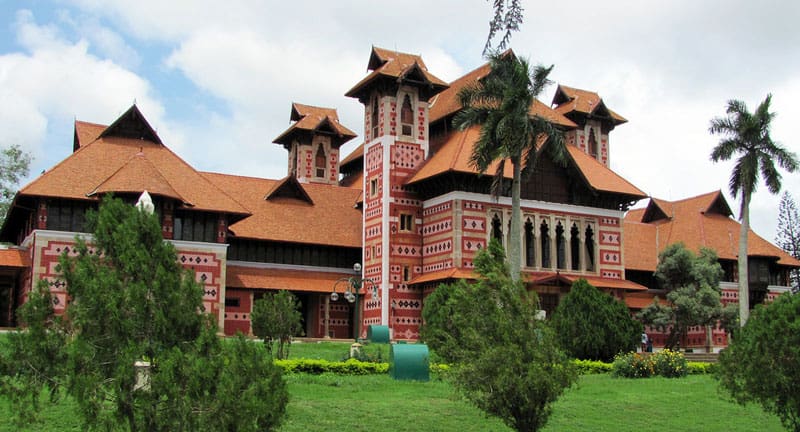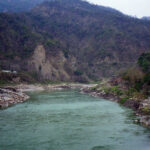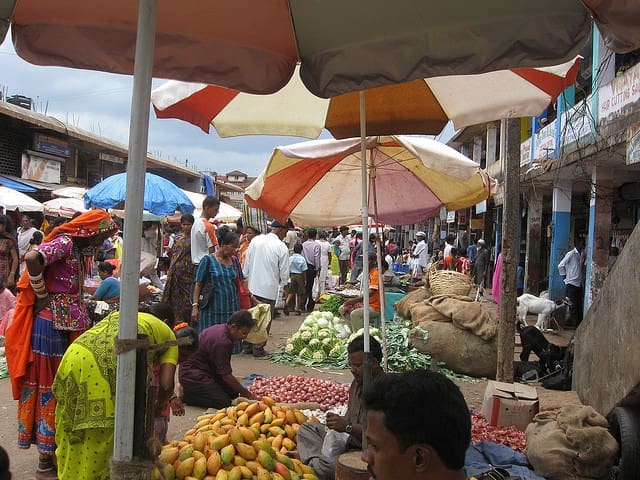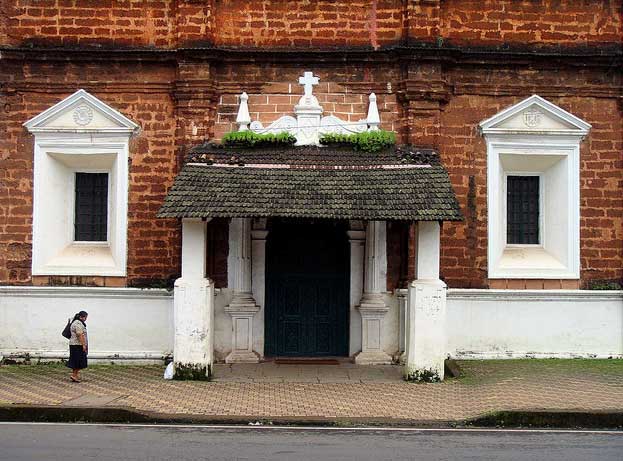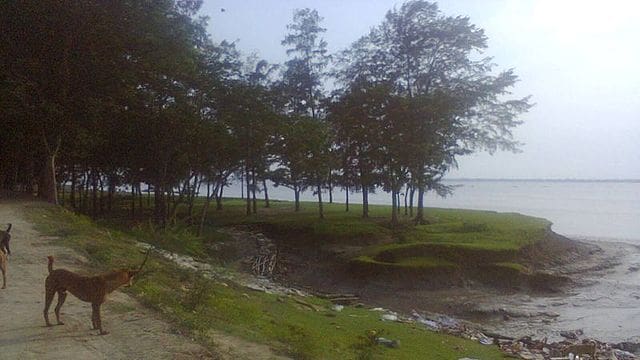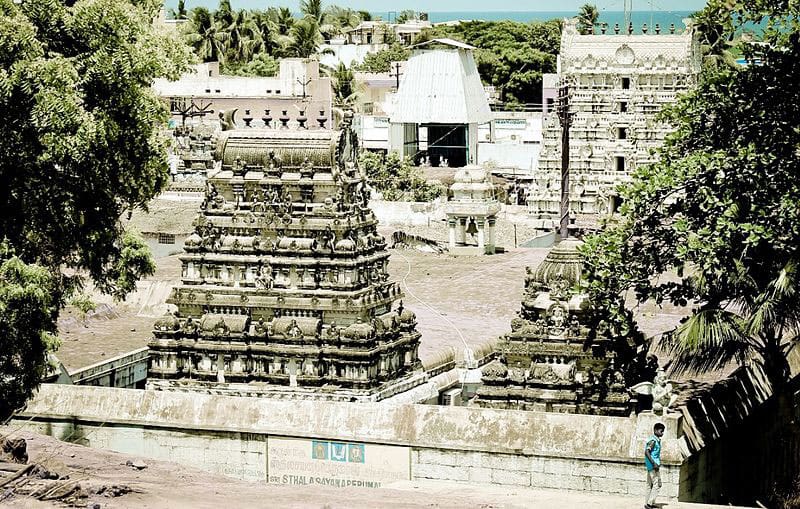Nestled in the heart of Kerala’s vibrant capital, the Napier Museum, Trivandrum, stands as a testament to the region’s rich cultural and historical legacy. Embodying the spirit of traditional Kerala architecture blended with Indo-Saracenic influences, the museum is not just an exhibition space, but a living chronicle of South India’s ancient heritage. For travelers, historians, students, and art lovers, the Napier Museum, Trivandrum is an unmissable destination that offers a captivating journey through time, art, and tradition.
The Architectural Splendor of Napier Museum, Trivandrum
One of the defining characteristics of the Napier Museum, Trivandrum is its unique architecture. Commissioned in 1880 and named after Lord Napier, the then Governor of Madras, the museum’s structure beautifully fuses local building traditions with Gothic roof lines and Mughal influences. The red-and-white brick façade, intricate woodwork, and stained glass windows combine to create a genuinely enchanting atmosphere. Its natural air conditioning, achieved by clever architectural design involving high roofs and latticed windows, makes a visit pleasant even in Kerala’s tropical climate.
A Historical Overview: Foundation and Legacy
The foundation of the Napier Museum, Trivandrum, represents a pivotal period in Kerala’s cultural development. Established under the patronage of British colonial administrators, the museum was conceived as a hub for the promotion of art, historical research, and the preservation of South India’s rich archaeological discoveries. Over the decades, various expansions and renovations have ensured the conservation and contemporary relevance of the museum’s extensive collection.
Comprehensive Overview of the Collections
Bronze Sculpture Collection
The heart of the Napier Museum, Trivandrum lies in its magnificent assemblage of bronze sculptures. Ranging from ancient to medieval centuries, these bronzes primarily originate from South Indian temples and display breathtaking detail. Noteworthy among these are the icons of Hindu deities like Vishnu, Shiva, and Parvati, which showcase the intricate iconography and craftsmanship distinctive of the Chola and Pandya dynasties.
Ivory and Wood Carvings
Another hallmark of the museum’s holdings is its ivory and wood carving gallery. Here, visitors are treated to a mesmerizing array of furniture, decorative panels, and idols crafted from both Kerala’s famed rosewood and ivory. These artefacts not only showcase fine artistry but also reflect the socio-cultural values, mythological stories, and rituals of erstwhile Kerala society.
Arms, Armory, and Historical Artifacts
The Napier Museum, Trivandrum is also renowned for its collection of ancient armory—swords, shields, spears, and ceremonial weapons belonging to Kerala’s royal dynasties and warrior clans. These relics provide invaluable insights into the martial traditions and historical conflicts that shaped the state and broader South India.
Numismatic and Textile Collections
Another fascinating corner is the museum’s numismatic section, which showcases rare coins from various Indian kingdoms and foreign empires that traded with Kerala. Adjacent to this, the textile collection demonstrates Kerala’s celebrated weaving traditions—displaying fabulous kasavu sarees, temple banners, and elaborate costumes used in classical dance and temple rituals.
Prehistoric and Megalithic Remnants
For those with an interest in archaeology, the museum’s megalithic and prehistoric gallery displays pottery shards, burial urns, and primitive tools. These ancient remnants extend Kerala’s history back to the Neolithic and Iron Age, revealing crucial details about the early settlers of the region.
Highlight Artifacts at the Napier Museum, Trivandrum
-
Nataraja Bronze: An exquisite representation of Shiva as the Lord of Dance, a masterpiece of Chola artistry.
-
Ivory Throne of Travancore: A magnificent ceremonial seat crafted for the Maharaja, adorned with detailed ivory inlay.
-
Buddhist Bronze from Nagapattinam: Demonstrates the influence and spread of Buddhism in South India.
Ethnological Gallery: Telling Kerala’s Story
The ethnology gallery inside the Napier Museum, Trivandrum brings to life the lifestyle, costumes, jewelry, and utensils of Kerala’s various indigenous and social communities. This section fosters an appreciation for the diversity in customs, festivals, and daily life that define Kerala’s unique cultural identity. The display of traditional musical instruments, including the chenda, maddalam, and veena, traces the evolution of Kerala’s vibrant performing arts scene.
Natural History Section
Adjacent to the main building, the Natural History Museum complements the Napier Museum, Trivandrum by chronicling Kerala’s flora, fauna, and geological wonders. Visitors will find taxidermied animals, bird specimens, and a curated collection of rocks and minerals. This section is especially popular with school groups and families eager to learn more about Kerala’s biodiversity.
Trivandrum Zoo and Botanical Gardens
What sets the Napier Museum, Trivandrum apart is its location within a lush, landscaped complex that also houses the Trivandrum Zoo and a sprawling botanical garden. The setting is tranquil, with tree-lined walkways, ponds, and rare plant specimens. The zoo—one of the oldest in India—attracts wildlife enthusiasts, while the garden provides an opportunity to encounter tropical and exotic plant species.
Events, Exhibitions, and Educational Programs
The Napier Museum, Trivandrum is more than just a static repository—it is a vibrant cultural hub hosting numerous temporary exhibitions, art workshops, and educational programs throughout the year. School collaborations, guided tours, and heritage awareness campaigns foster engagement with the region’s cultural legacy. Special events, including heritage walks and classical music recitals, animate the museum’s exquisite surroundings.
Visiting Experience: Navigating the Napier Museum, Trivandrum
Location and Accessibility
The Napier Museum, Trivandrum enjoys a prime location in the city center, making it easily accessible from major transport hubs. Visitors can reach the site via local buses, taxis, or auto-rickshaws, with clear signage guiding travelers from all parts of the city.
Timings and Admission
The museum generally opens six days a week, except Mondays and certain public holidays. Visitors are encouraged to confirm timings before visiting, as schedules may vary depending on government regulations and maintenance protocols. Admission is affordably priced, with concessions for students, seniors, and children, making it a family-friendly destination.
Guided Tours and Amenities
For a richer experience, guided tours—conducted in English and regional languages—are available. The Napier Museum, Trivandrum also features a cafeteria, souvenir shop, and well-maintained rest areas, ensuring comfort for all guests. Ample parking, wheelchair access, and hygiene facilities have been thoughtfully provided.
Preservation and Conservation Initiatives
The management of the Napier Museum, Trivandrum places immense emphasis on preservation and restoration. Behind every artifact are skilled conservators who deploy scientific methods and traditional restoration techniques to ensure the longevity of the collection. The museum also collaborates with Indian and international heritage organizations to keep abreast of best practices in museology.
Research and Publications
Napier Museum, Trivandrum functions as a significant research center. Annual journals, catalogs, and research papers produced by the museum’s staff contribute to the academic study of Kerala’s history, art, and culture. Collaborations with universities and archaeological departments promote scholarly dialogue and resource sharing.
Impact on Tourism and the Local Economy
The Napier Museum, Trivandrum is a leading force in Kerala’s cultural tourism industry. It attracts thousands of domestic and international tourists annually, supporting ancillary sectors like hotels, restaurants, and handicrafts. The museum’s ability to narrate the region’s story in an engaging and visually rich manner makes it a cornerstone of Trivandrum’s tourism landscape.
Role in Promoting Cultural Awareness and Education
By offering a window into Kerala’s diverse legacy, the Napier Museum, Trivandrum plays a vital role in cultural education. Schoolchildren, university students, and local communities gain a deeper understanding of their roots and shared heritage. Outreach programs, children’s workshops, and interactive sessions ensure that the younger generation continues to value cultural inheritance.
Photography and Artistic Inspiration
The picturesque setting and architectural grandeur of the Napier Museum, Trivandrum inspire artists, photographers, and architects. It is a favorite destination for professional shoots, sketching sessions, and plein air painting groups. The museum’s ornamental gardens and sprawling front lawns provide a serene backdrop, making every visit memorable.
Surrounding Attractions and Itinerary Planning
The museum’s central location enables tourists to combine their visit with other popular attractions in Trivandrum, including the Sri Chitra Art Gallery, Kanakakkunnu Palace, and Padmanabhaswamy Temple. Walking tours can be mapped to maximize the cultural experience and soak in the vibrant atmosphere of Kerala’s capital city.
Sustainability Efforts: Heritage and Environment
Modernization at the Napier Museum, Trivandrum aligns with sustainability and responsible tourism. The management ensures eco-friendly practices, such as waste segregation, rainwater harvesting, and the use of solar energy. The botanical garden not only delights visitors but also participates in conservation of native flora and serves as an urban green lung.
Connecting Past and Present—A Timeless Appeal
The enduring appeal of the Napier Museum, Trivandrum is its ability to transport visitors across centuries while remaining relevant to contemporary audiences. It stands as a bridge—connecting the ancient and the modern, the local and the global, art and life.
How to Reach the Napier Museum, Trivandrum
-
By Air: The museum is approximately 6 km from Trivandrum International Airport.
-
By Rail: Thiruvananthapuram Central railway station is just 3 km away.
-
By Road: Well-connected, with multi-modal public and private transport facilities.
Travel Tips for Visitors
-
Carry a camera for outdoor photography (indoor photography may be restricted).
-
Check for special scheduled exhibitions and events during festive seasons.
-
Wear comfortable footwear as the museum complex is expansive.
-
Consider guided tours for in-depth historical context.
-
Allocate at least 2–3 hours for a complete and enriching visit.
The Napier Museum, Trivandrum in the Digital Age
With the advent of digital technology, the museum has embarked on virtual tours, online exhibitions, and digital catalogs. This initiative ensures global reach, enabling art lovers and researchers from around the world to access the museum’s invaluable collections.
Why the Napier Museum, Trivandrum is a Must-Visit
-
Unmatched diversity of artifacts spanning centuries and dynasties.
-
Distinctive architecture reflective of Kerala’s fusion culture.
-
Serene ambiance within lush, landscaped surroundings.
-
Engaging educational programs for all age groups.
-
Central role in promoting Kerala’s global image.
-
Well-rounded experience, integrating art, history, ecology, and leisure.
Conclusion
The Napier Museum, Trivandrum, is much more than a building filled with artifacts. It is an evocative space where the stories of Kerala’s people, traditions, and artistry converge. As one wanders through its galleries, shaded paths, and quiet halls, one becomes a part of the ongoing tapestry of culture that the museum so passionately protects and displays.
Frequently Asked Questions (FAQ) about Napier Museum, Trivandrum
-
Where is the Napier Museum located?
The Napier Museum is in the heart of Thiruvananthapuram (Trivandrum), Kerala, India. -
What are the main attractions inside the Napier Museum?
Key attractions include bronze sculptures, ivory carvings, ancient coins, textiles, and a gallery dedicated to ethnology and natural history. -
What is the architectural style of the Napier Museum?
The museum features a blend of Indo-Saracenic, Mughal, and traditional Kerala architectural elements. -
When was the Napier Museum established?
It was established in 1880. -
Is photography permitted in the Napier Museum?
Photography is permitted in the gardens, but indoor photography may be restricted. -
What are the visiting hours of the Napier Museum, Trivandrum?
Usually open six days a week except Mondays and select holidays; timings vary. -
Are guided tours available?
Yes, guided tours are available in multiple languages. -
What can children learn at the museum?
Children can learn about Kerala’s culture, arts, biodiversity, and history through interactive exhibits and special programs. -
Is the Napier Museum wheelchair accessible?
Yes, the premises are equipped with ramps and accessible facilities. -
What is the entry fee for the Napier Museum?
Entry fees are modest, with concessions for students and children. -
Are there any special exhibitions held at the museum?
Yes, the museum regularly hosts temporary exhibitions and cultural events. -
Can I buy souvenirs at the Napier Museum?
Yes, there is a souvenir shop offering arts, crafts, and memorabilia. -
What other attractions are nearby?
Nearby attractions include Sri Chitra Art Gallery, Trivandrum Zoo, Kanakakkunnu Palace, and Padmanabhaswamy Temple. -
Does the museum provide food and refreshments?
There is a cafeteria offering light refreshments and beverages. -
What is unique about the Napier Museum, Trivandrum?
Its architecture, rare artifacts, immersive exhibitions, and tranquil gardens make it truly unique.


